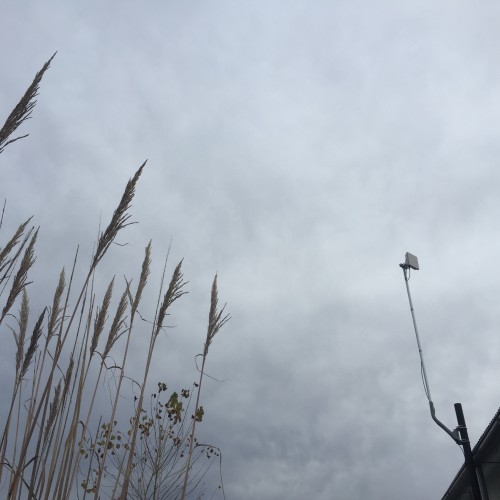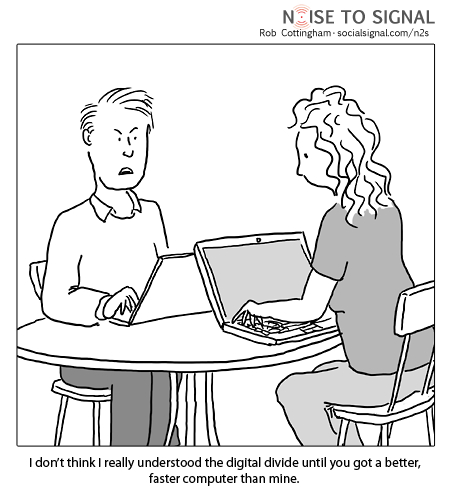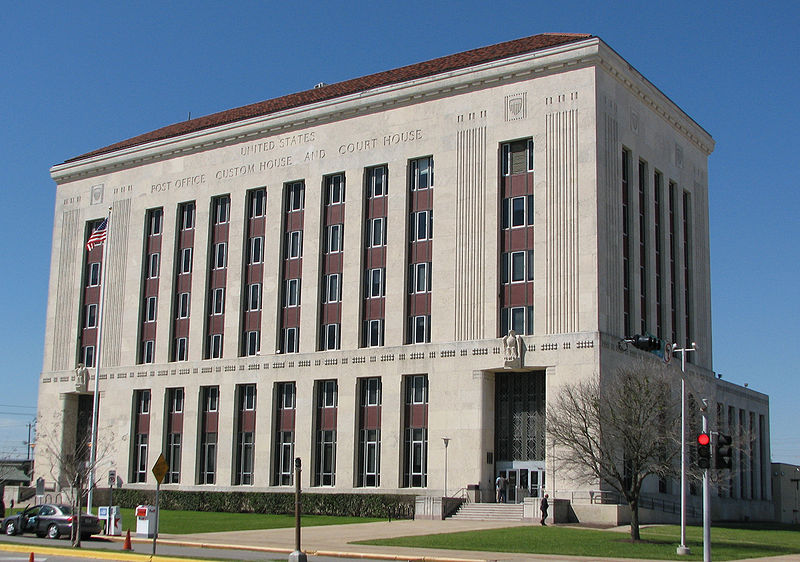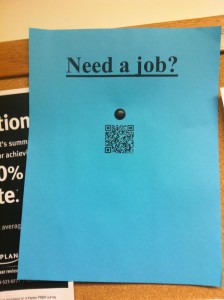
I moved to rural Kansas a over a year ago. I live beyond Lawrence city limits, on the outskirts of Stull (where local legend places one of the gateways to hell), and 50 minutes driving to the nearest Google Fiber connection. It’s a liminal space in terms of broadband connection – the fastest network in the country is being built in the neighboring metropolitan area but when I talked to my neighbors about internet service providers in our area, they were confused by my quest for speeds higher than 1mbps. As this collection of essays on “small town internet” suggests, there’s an awareness that internet in rural, small town, and “remote” places exists, but we need to understand more about how digital connection is incorporated (or not) into small town and rural life: how it’s used, and what it feels like to use it.
One of my ongoing projects involves researching digital divides and digital inclusion efforts in Kansas City. The arrival of Google Fiber in Kansas City, KS and Kansas City, MO has provided increased momentum and renewed impetus for recognition of digital divides based on cost, access, education and computer literacy, relevance, mobility, and more discussion and visibility for organizations and activists hoping to alleviate some of these divides and emphasize internet access as a utility. I’ve argued that by reading digital media in relationship to experiences of “place,” we gain a more holistic and nuanced understanding of digital media use and non-use, processes and decisions around implementation and adoption, and our relationships to digital artifacts and infrastructures. In other words, one’s location and sense of place become important factors in shaping practices, decisions, and experiences of digital infrastructure and digital media.
The irony is not lost on me that while studying digital divides in a metropolitan area, I had chosen to live in a location with its own, unique series of inequities in terms of internet connection. These inequities have nothing to do with socio-economic instability or lack of digital literacy, as I had funds and willingness to pay a significant amount for internet service (comparable to the prices charged by urban-based, corporate ISPs), and everything to do with the fact that I lived in an area that felt as if it had been forgotten or intentionally bypassed by the internet service providers (ISPs) I had come to know living in other US cities and towns. more...









